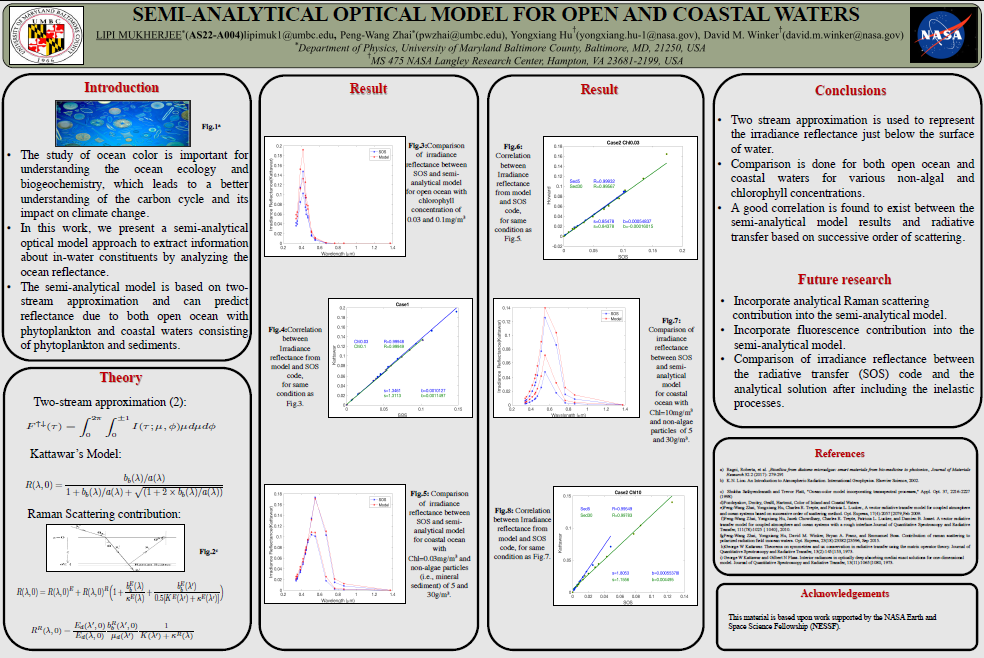Summary of Work:
The study of ocean color is important for understanding the ocean ecology and biogeochemistry, which leads to a better understanding of the carbon cycle and its impact on climate change. Water leaving radiance from oceans, obtained from satellite sensors contains information about ocean constituents including sediments, phytoplankton and pollutants in water. Radiative transfer models can be used to interpret and extract information from measurement data. However, radiative transfer simulations are computationally expensive and generally cannot be used on the fly in the retrieval algorithms. In this work, we present a semi-analytical optical model approach to extract information about in-water constituents by analyzing the ocean reflectance. The model is based on two-stream approximation and can predict reflectance due to both open ocean with phytoplankton and coastal waters consisting of phytoplankton and sediments. We compare this model with the successive order of scattering based radiative transfer code. A good correlation was found to exist between the semi-analytical optical model results for both open and coastal waters. Major inelastic scattering contributors like Raman scattering and fluorescence from chlorophyll will be included in the reflectance model as part of the future work.
